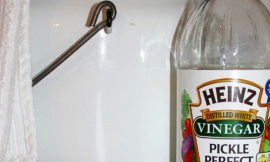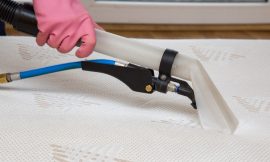
Did you know that mold can thrive in your air ducts, compromising not just your indoor air quality, but potentially your health as well? An estimated 30% of buildings in the United States have mold problems, and air ducts become a prime breeding ground if not properly maintained. In this article, we'll explore how to identify mold in your air ducts, the best methods for safe removal, and key prevention strategies to keep your home or office mold-free. Let's dive in and ensure your air quality is as fresh as it should be!
Identifying Mold in Your Air Ducts
Detecting mold in your air ducts can make a significant difference in your home’s air quality. So, how do you know if it's there?
Signs of Mold Presence in Your Air Ducts
Common signs include a musty odor emanating from the vents, visible growth on duct surfaces, or increased allergy symptoms among occupants. If you see any unusual discoloration on the ductwork or notice that dust and debris are sticking together, these may also indicate mold growth.
Health Symptoms Associated with Mold Exposure
Exposure to mold can trigger various health issues. You might experience respiratory problems, nasal congestion, skin irritations, or headaches. If anyone in your household has allergies or asthma, mold can worsen these conditions, leading to more severe symptoms.
Types of Mold Commonly Found in Air Ducts
Some common types of mold you might find in your air ducts include Aspergillus, Cladosporium, and Stachybotrys (commonly known as black mold). Each of these mold types can pose unique challenges and health risks, making it crucial to identify them swiftly.
Health Risks of Mold in Air Ducts
Understanding the health risks associated with mold in your air ducts is essential.
Overview of Health Risks (Allergies, Respiratory Issues)
Mold spores can become airborne and circulate throughout your home, leading to respiratory issues such as coughing, wheezing, and shortness of breath. Additionally, mold exposure can exacerbate allergies, leading to more frequent sneezing, itchy eyes, and sinus congestion.
Vulnerable Populations (Children, Elderly, Immunocompromised)
Certain populations are at higher risk when it comes to mold exposure. Children, the elderly, and those with weakened immune systems can face more severe consequences than others. For these individuals, even minor exposure may lead to significant health challenges.
Long-term Effects of Mold Exposure
Long-term exposure to mold can lead to chronic respiratory diseases, persistent headaches, and in some cases, increase the risk for serious conditions such as asthma or chronic obstructive pulmonary disease (COPD).
Safe Removal of Mold from Air Ducts
If you've identified mold in your air ducts, taking safe action is crucial.
Essential Tools and Materials Needed for Removal
Before getting started, gather the necessary tools: protective gear (gloves, mask, goggles), a vacuum with a HEPA filter, a scrub brush, and cleaning supplies (like vinegar or specialized mold removal solutions).
Step-by-Step Guide on How to Clean Mold from Air Ducts
- Turn Off Your HVAC System: This prevents the spread of mold spores while cleaning.
- Seal Off Vents: Use plastic sheeting to cover vents in other rooms to keep spores contained.
- Vacuum the Ducts: Use a vacuum with a HEPA filter to remove loose dust and mold spores.
- Scrub Surfaces: Use a scrub brush and your chosen cleaning solution to clean the duct surfaces.
- Dry Thoroughly: Ensure all surfaces are dry to prevent mold from returning.
- Reassemble and Test: Once everything is cleaned and dried, reassemble the ductwork, turn on the HVAC system, and check for any lingering odors.
When to Hire a Professional vs. DIY
If the mold covers a significant area, it may be best to hire a professional. They have the tools and expertise to safely remove mold, especially from hard-to-reach places. If the infestation seems small, and you're comfortable, a DIY approach can work.
Preventing Mold Growth in Air Ducts
Taking preventative measures can save you a lot of trouble in the long run.
Importance of Regular Maintenance and Cleaning
Regular maintenance is key to preventing mold growth. Cleaning your ducts every few years can help catch potential problems early, ensuring you're not breathing in harmful spores.
Best Practices to Minimize Moisture in Air Ducts
Mold thrives in moisture, so controlling humidity levels is vital. Fix any leaks promptly, use dehumidifiers if needed, and ensure that bathroom and kitchen vents are working properly to reduce excess moisture.
Tips for Improving Indoor Air Quality
Consider using air purifiers with HEPA filters, regularly changing HVAC filters, and keeping your home well-ventilated to improve overall indoor air quality.
Recommended Products for Mold Prevention
Equipping your home with the right products can help keep mold at bay.
Overview of Effective Mold Inhibitors
Products like mold-resistant paint, HVAC biofilters, and mold inhibitors can effectively combat mold growth. They help create an environment that’s less hospitable to mold spores.
Comparison of Different Air Duct Cleaning Products
There are various products available for air duct cleaning, ranging from chemical sprays to dry cleaning solutions. Always read customer reviews and product specifications to find a reputable choice that meets your needs.
Essential Features to Look for in Mold Prevention Products
When selecting mold prevention products, look for those that are non-toxic, effective against a broad spectrum of mold types, and ideally, backed by scientific research. Features like long-lasting effects and user-friendliness are also essential in making the best choice for your home.
Conclusion
By identifying, safely removing, and preventing mold in your air ducts, you can significantly enhance the air quality of your home or office, protecting the health of everyone inside. Regular maintenance is key, so don't wait until you see signs of mold. We've equipped you with the knowledge and tools needed—now it's time to take action! Feel free to reach out with any questions or for further tips on maintaining a healthy indoor environment.






